( – promoted by oke)
One example of a Salado Culture pueblo can be found near the city of Globe, Arizona. South of the city at the confluence of Pinal Creek and Ice House Canyon Wash is the Besh-Ba-Gowah Archaeological Park.
Seven hundred years ago, the Salado people built a number of pueblos in this area. At this time, there was a continually flowing spring near this site which provided the people with water. Pinal Creek flowed throughout the year and contained fish. Eventually, the Salado people constructed eight villages along Pinal Creek.
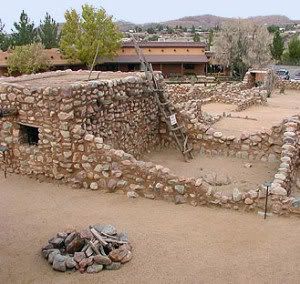
The largest Salado pueblo along Pinal Creek is the Gila Pueblo which was built around the year 1225. This pueblo included four-story buildings. The pueblo was destroyed by an earthquake in 1340.
The earthquake of 1340 also destroyed the Besh-Ba-Gowah pueblo. The Salado people rebuilt both the Gila pueblo and the Besh-Ba-Gowah in 1345.
The Besh-Ba-Gowah pueblo had about 400 rooms, and of these about 250 were ground floor rooms. As with other pueblos, entrance to the rooms was usually from the top. In other words, people would climb to the roof on ladders and then descend into the room through a ladder from the roof. The roofs were constructed of logs which were then covered with reeds, mats, and a thick coat of mud.
Entrance to the pueblo was via a long, narrow, ground level corridor covered by the second level. The corridor opened onto the main plaza. This may have had had defensive purpose.
The main plaza of Besh-Ba-Gowah was about 12 meters by 27 meters. High status individuals-about 150 in all-were buried under this plaza.
The largest room in the Besh-Ba-Gowah pueblo is designated as a ceremonial room by present-day archaeologists. The room includes a sipapu-a hole in the floor representing the hole in the earth through which the people emerged into the present world-which is filled with turquoise dust and covered with a large quartz crystal. The room also has a series of built-in benches at various levels.
At Besh-Ba-Gowah, the Salado people cultivated corn, squash, pumpkins, and beans. Water was carried from the creek to their fields through a series of rock lined irrigation ditches.
The growing season for this area was 228 days long. This meant that the Salado people had to harvest their corn prior to the fall equinox.
In addition to growing crops, they also gathered many wild plants from the surrounding countryside. These included Agave, Yucca, Dasylirium, Opuntia, Mammilaria, Prosopis, Acacia, Larrea, Quercus, Simmodsia, Populus, Pinus, Juniperus, Juglens, Celtis, Vitis, Amaranthus, and Phragmites.
Besh-Ba-Gowah was a part of a major trade route from Casas Grandes, Chihuahua, Mexico. This trade route came up the San Pedro River drainage and passed along Pinal Creek en route to the Salado River. The trade route was in use from 1100 to 1450 AD. The largest pueblos on Pinal Creek were cosmopolitan trade centers. The Salado people exported ground pigments, turquoise, beads, and ceramic bowls.
The Besh-Ba-Gowah potters were masters of the craft. The apex of their product is Gila Polychrome. Salado Culture pottery has the largest areal distribution of any Southwest ware.
At Besh-Ba-Gowah Archaeological Park today’s visitors can walk through a 700 year old Salado Culture pueblo, climb ladders to second story rooms and view the typical furnishings of the era. Numerous artifacts of this remarkably advanced culture are also displayed in the Besh-Ba-Gowah Museum. Besh-Ba-Gowah has one of the largest single site archaeological collections in the southwest and is one of the most significant finds of Southwest archaeology. It is one of the largest and most complex of the Salado communities.
Inside the museum two models of the ruins are presented. One shows the present condition. The other is a hypothetical reconstruction of the pueblo in 1325. It shows 20 courtyards and 2 three-story sections. One of the displays illustrates the archaeologist’s tool kit.
Stone items on display at the museum include manos and metates, delicate carved stone palettes, stone axes and hoes, obsidian points, turquoise beads, local minerals and a bow drill for bead making. Shell jewelry shows that the trading networks extended to the Gulf of Mexico and the Pacific Ocean. Fabric artifacts include woven baskets and mats, sandals woven from yucca leaves, and fine woven cloth.
One wall of the museum is covered with shelves of ancient pottery two pieces deep. A wide and diverse range of pottery includes red and white ware and plain and decorated pots. Besh-Ba-Gowah has a high percentage of decorated ware. The painted wares include Gila, Pinto and Tonto polychromes. Some Gila polychrome have Mimbres-like designs of stylized bird, insect and animal motifs. A unique type of local pottery is the donut-shaped canteen.
Prior to the establishment of the Salado culture pueblos along Pinal Creek, there were a number of Hohokam sites in the area. The earliest Hohokam settlement of the area dates to around 550 and one Hohokam village was occupied continuously from 800 to 1150.

Besh-Ba-Gowah is an Apache word meaning “Place of Metals,” and refers to modern mining activity.
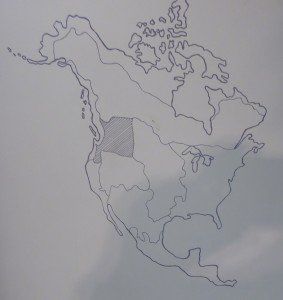
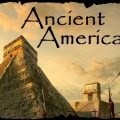
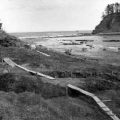
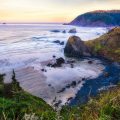
Leave a Reply